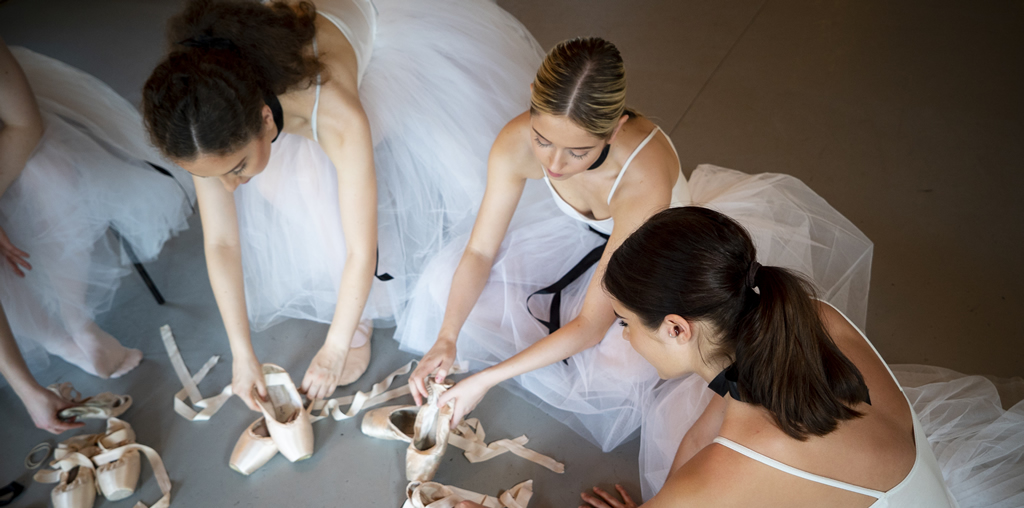[dropcap style=”font-size:100px;color:#992211;”]T[/dropcap]he following interview arises out of the film, Degas: Passion For Perfection, with answers provided by its director, editor and co-writer (with Philip Grabsky), David Bickerstaff. Edgar Degas (19 July 1834 – 27 September 1917) is most often associated with the Impressionists, with whom he socialised and exhibited. He rejected the term impressionist, preferring ‘realist’.
He was much influenced (as was Picasso, later) by Jean-Auguste-Dominique Ingres, and it was Ingres who insisted that great artists must copy the masters, and then copy them again. It was advice he took to heart. He was also a sculptor, though none of the bronzes were cast during his life. The pieces he made, and from which the bronzes were cast, were made of wax.
There is much in Degas that is innovative and can be seen to have predated central themes in later modernity. What makes this curious is that he was, especially later in life, a reclusive character; and very much a conservative. The Degas: A Passion For Perfection show at the Fitzwilliam Museum was a great testament to his work and the film preserves the interest with which Degas affects us.
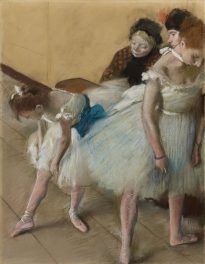
The film is based upon the exhibition at the Fitzwilliam Museum in Cambridge. What made you select this exhibition, rather than, say, a wide review of the artist’s work from a biographical point of view?
In general Exhibition On Screen aims to focus its films around the central narrative of a high-profile exhibition about an artist with a global name like Degas. There are exceptions like the recent Michelangelo: Love and Death and the upcoming Young Picasso which takes a broader biographic approach without being associated with one museum or another. We have always loved the Fitzwilliam as a museum and think it houses one of Britain’s greatest collections of art so when we discovered that it was staging a major exhibition on Degas, we welcomed the opportunity to work with it. Although our film centres around its exhibition, we always endeavour to widen the narrative beyond the walls of the exhibition with biographical detail and with works that are not in the exhibition but are significant to Degas’ story such as the brilliant group portrait of his relatives, The Bellelli Family.
There are shots of the works that track the way that artists look at paintings and drawings, moving from detailed close-ups and tracking across and back to get a feel of the surface and to see how those details add up to a whole. Is that part of your own practice as an artist?
When you study as a fine artist the first thing you learn is ‘observation’. You are asked to look and look again, question what you see and interrogate its meaning. I believe these are skills that stay with you and can be applied to any aspect of creative practice or the search for greater understanding. Being in close proximity to artworks and particularly paintings you realise that the surface is not flat, it has material volume. The camera can heighten this sense of artistic matter and bring the viewer closer to the marks made by masters like Degas. I would like to think that I bring my training as an artist into my cinema practice by slowing down the process of ‘looking’ and giving space to curiosity, observation and learning.
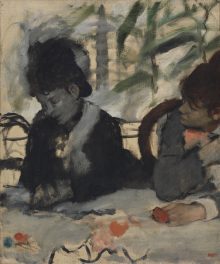
The relation of detail to whole and the filmic tracking works well with the artist’s hand, using pastel, and then later on, wetting the pastel, and the suggestion of adding spirit to the pastel to enable the surface to be further worked. That uses the film medium to good effect; the viewer gets to see process in action. Do you see parallels with the making of your film?
We certainly like to observe, respond, unpack detail, give a sense of journey, tell stories in altered time, but hopefully they feel natural and sympathetic to the experience of looking at art, making art and learning about artistic practice. Sometimes filmmakers draw attention to the observation process by giving the camera a deliberate presence such as using some handheld techniques but I don’t think this kind of visual energy is needed for films like Degas: Passion for Perfection because the energy and visual power is in the works already. Showing artistic process is very important for context in these films, demonstrating the haptic nature of art, but I wouldn’t want an audience to be concentrating on the filmmaking process instead of the art-making process shown within the film.
Process is put to the fore throughout the film. Jeffrey Dennis, our contemporary painter, speaks of the process of seeing. He talks of someone with perfect vision being (paradoxically) restricted in her pictorial seeing, in that the process of painting is a way of carving out content from an influx of hazy, fairly indistinct, colour and texture. Is that something Degas helped to bequeath to our sensibilities, and, again, is that something that has infiltrated the cinematic conception of picture-making?
Degas was never satisfied with his work. The idea of permanence or finality seemed an anathema to him. In this way we perceive him to be very modern, experimental and focused on process rather than the end product. This kind of approach has become normal in the modern art school as opposed to the strict academic leanings of the past that concentrated on perfecting technique and fine finishing. This can be seen as a legacy of artists like Degas but I suspect that in Degas’ case it was more accidental than a deliberate artistic statement of intent because he had an inability to satisfy himself and found pleasure in the making process, rather than the finished work. He was rather annoyed when he became unable to engage with this process due to his apparent physical failings brought on by age. With his failing eyesight, he shifted to more tactile mediums in an effort to keep creating works of art. This experimentation across different mediums is also seen as modern and avant-garde but produced through a response to adversity.
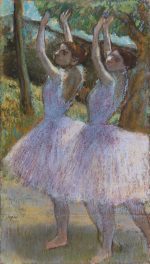
The emphasis on process, both of the making of the images from the artist’s point of view, and of the spectator’s constructive seeing involved in the interpretation of the picture is distinctively modern. The exhibition marks the centenary of Degas’ death. Do you see this as the right time to review the contribution Degas has made to our conception of modernity?
There is no doubt that Degas had a great capacity to experiment with composition and be inventive with materials. With historical hindsight, it is right to consider them modern but I am not too sure how deliberate Degas was about seeing himself as modern. I definitely think it is time to re-examine his oeuvre in context with his ability to push the boundaries of accepted practice. We need to look beyond the pretty ballet dancers he is famous for and highlight lesser-known areas of his art practice such as his monotypes and nude drawings, but his position in the concept of modernity is complex. On the one hand he was a serial experimenter always breaking the rules, yet he didn’t reject tradition but saw it as the baseline for his approach to art. He mixed with some of the most radical thinkers of his time and embraced new texts yet he was conservative in his politics and social attitudes. I am not sure he saw himself as being modern at all and in fact had a great disdain for others that pronounced themselves avant-garde.
Art historian Anthea Callen hints at a misogynistic attitude in Degas. The feminist art critic Eunice Lipton is more accommodating of his work. She is sympathetic to the idea of him having empathy with his subjects, seeing them as taking a step back from the ‘spectacle’, resting, unselfconscious of their look and in those parenthetical moments she reads Degas as someone who celebrates the ‘little rats’ who scuttled about backstage at the Paris Opera. How do you regard Degas in this respect?
It is an interesting debate but my overall impression is that he was misogynistic, born out of his bourgeois upbringing and self-absorbed, acerbic personality. He famously tested his models with difficult poses and chastised them if they complained or failed. He freely admits in letters that his gaze was one of voyeurism which is why his subjects rarely look out of the frame and seem to be caught in moments of private or contemplative action. He was once quoted as saying, “I, marry? Oh, I could never bring myself to do it. I would have been in mortal misery all my life for fear my wife might say, ‘That’s a pretty little thing’ after I had finished a picture.” But like everything about Degas there is a complexity to his relationship with women that can be filled with contradictions, from great concern for the well-being of close female friends to the total disregard for those women who challenged his way of living.
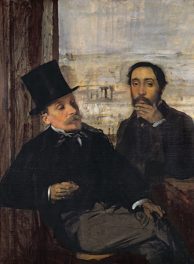 Do you think, given the proliferation of art media today, that Degas marks a step in the breaking up of medium-specific art, with new forms like photography, film, video, performance and conceptual art, all contributing to the liberation of art from the tyranny of genre; or do you think that Degas marks a limit at which aesthetic interest in the medium specific art can still operate?
Do you think, given the proliferation of art media today, that Degas marks a step in the breaking up of medium-specific art, with new forms like photography, film, video, performance and conceptual art, all contributing to the liberation of art from the tyranny of genre; or do you think that Degas marks a limit at which aesthetic interest in the medium specific art can still operate?
Degas definitely rallied against the tyranny of genre and artistic tropes. He hated the term ‘impressionism’ even though he was considered a major contributor to that movement. He was fascinated with new technologies like photography but hated the eternity of bronze; all his bronzes we see today were cast posthumously by his heirs. He was not afraid to experiment with new processes like monoprints but I am not sure Degas marks a step in the breaking up of medium-specific art—that is for history to determine. It was definitely not his aim to define history but to be remembered as a great artist that worked profusely across many mediums depicting a diverse subject matter.
Degas: Passion For Perfection is screening as part of the sixth season of Exhibition On Screen. For further information, visit www.exhibitiononscreen.com
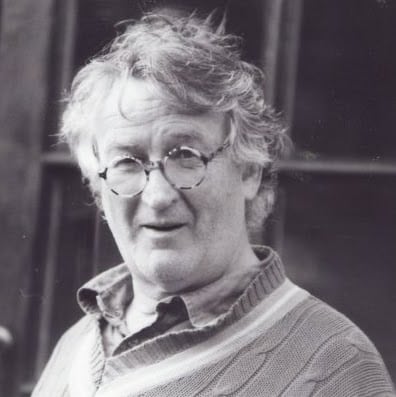
Ed studied painting at the Slade School of Fine Art and later wrote his PhD in Philosophy at UCL. He has written extensively on the visual arts and is presently writing a book on everyday aesthetics. He is an elected member of the International Association of Art Critics (AICA). He taught at University of Westminster and at University of Kent and he continues to make art.

